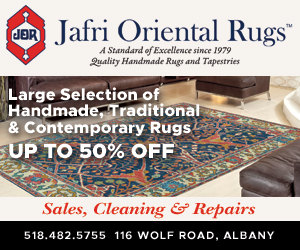
The Blurring Lines Between Indoor and Outdoor Spaces
The blurring lines today between indoor and outdoor spaces encourage homeowners to rethink their home. Many are looking for products that will stand up to the twin needs of beauty and functionality.
What products are suitable for harsh weather conditions and yet are stylish enough to be an indoor and outdoor design feature?
Tile
Tile is one of the most popular building materials for indoor transitioning to outdoor living. Its beauty, functionality and ease of upkeep make it popular for many different applications. Tile can be used in dry and level areas, wet and level areas, pool and bathroom areas, areas where oils are used as well as ramps and inclines such as sidewalks and driveways.
To decide which tile is appropriate for your needs, you should become familiar with the acronym DCOF, or dynamic coefficient of friction. It’s a mouthful, but a simple concept. DCOF is a measurement that determines how much friction is present on wet, level floors when they are walked upon. After all, you don’t want anyone, including family members, to slip and fall. The tile industry in North America states that 0.42 wet is the standard DOCF for tile that is potentially wet and level such as shopping center food courts. A grade of 0.62 is applicable to exterior areas such as swimming pool decks and locker rooms. You may think of your area as a dry area, but what about when it rains or snows? Your tile expert will be able to translate these commercial ratings into home uses, and it’s something you should ask her about.
You will also need to decide what kind of tile is appropriate for your area. Some tiles and bricks can be used to construct heating spaces with modern fire pits or fireplaces. Other tile may be used as trim while enclosing the heating unit. Tile can be used for backsplashes in the outdoor kitchen area and even for counters. The design can be as simple or as bold in color or design as you wish.
Tile flooring can be extended from an indoor living space to an outdoor area, making the entire space look larger and drawn together when using the same tile. The tiles don’t have to be identical as long as you use the same color tones.
Glass
Many homes are designed to maximize natural lighting by using glass walls to capture as much natural light as possible. In areas of cooler nights and winters, this may call for cleverly disguised heating elements and specially engineered glass panels. The wall-to-wall glass offers unparalleled views of the outdoors yet keeps the climate at bay.
Patios that are covered and connected to the living room or den by folding or sliding glass doors double the space and accommodate large parties seamlessly. The covered patio keeps the interior room cool and yet the outdoor space has fresh air on all sides. Glass is the perfect element for parents of young children who need supervision while the parents want the comfort of their interior spaces.
Furniture
When choosing furniture, color, style and size are important considerations. For outdoor furniture, another important consideration is the material the piece is made of. The most popular materials are steel, wrought iron, recycled plastic, wood, resin wicker and aluminum. The choice of what material depends on where you live and your weather conditions.
Steel is a great material for areas that have lots of rain, humidity and extreme temperatures. It is usually powder coated to help prevent rust and moisture damage.
Recycled plastic is extremely strong and durable as well as eco-friendly. This material withstands rain, wind and high temperatures. The colors are imbedded in the material so it won’t fade.
Wood is a perennial favorite. Teak, cedar and oak are popular hardwoods that withstand rain (if sealed), sunlight, humidity, wind and extreme temperatures well. Natural wood adapts to all design schemes.
Resin wicker is an all-weather synthetic wicker created to provide the wicker look without the problems of natural wood wicker. Resin wicker withstands rain, sun and humidity. Most quality resin wicker is made from PVC or polyethylene strands that withstand fading and cracking.
Aluminum is the most popular choice for outdoor furniture. Aluminum is affordable, durable and lightweight. It resists rust and moisture damage. Aluminum’s only disadvantage is that it can get very hot in direct sunlight. It’s low maintenance and will last for several seasons.
After creating your indoor and outdoor spaces, choose the furniture that is best for your climate to establish the look you want. Visit design studios, home and garden shows or check out the web to study newer furniture elements whose style and color will add the pizazz you need to emphasize the beauty of your space. ■
Sources: daltile.com, bobvila.com, goodhousekeeping.com and climaoutdoor.net.







